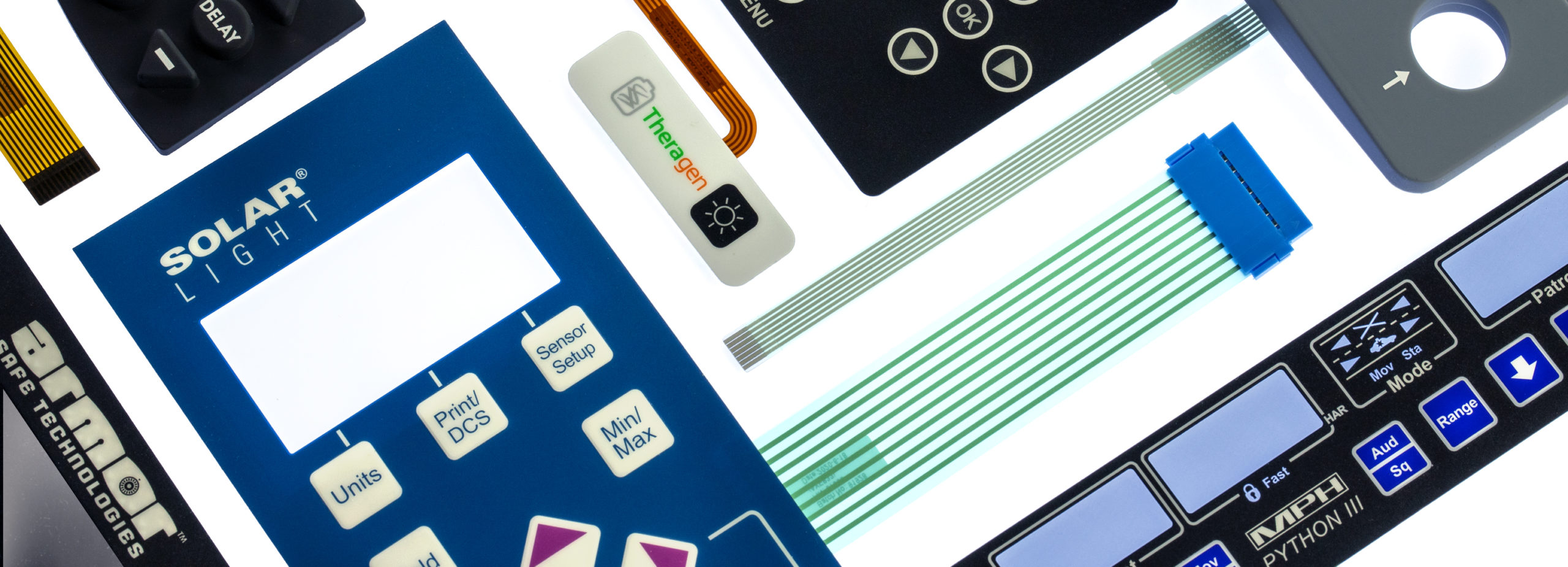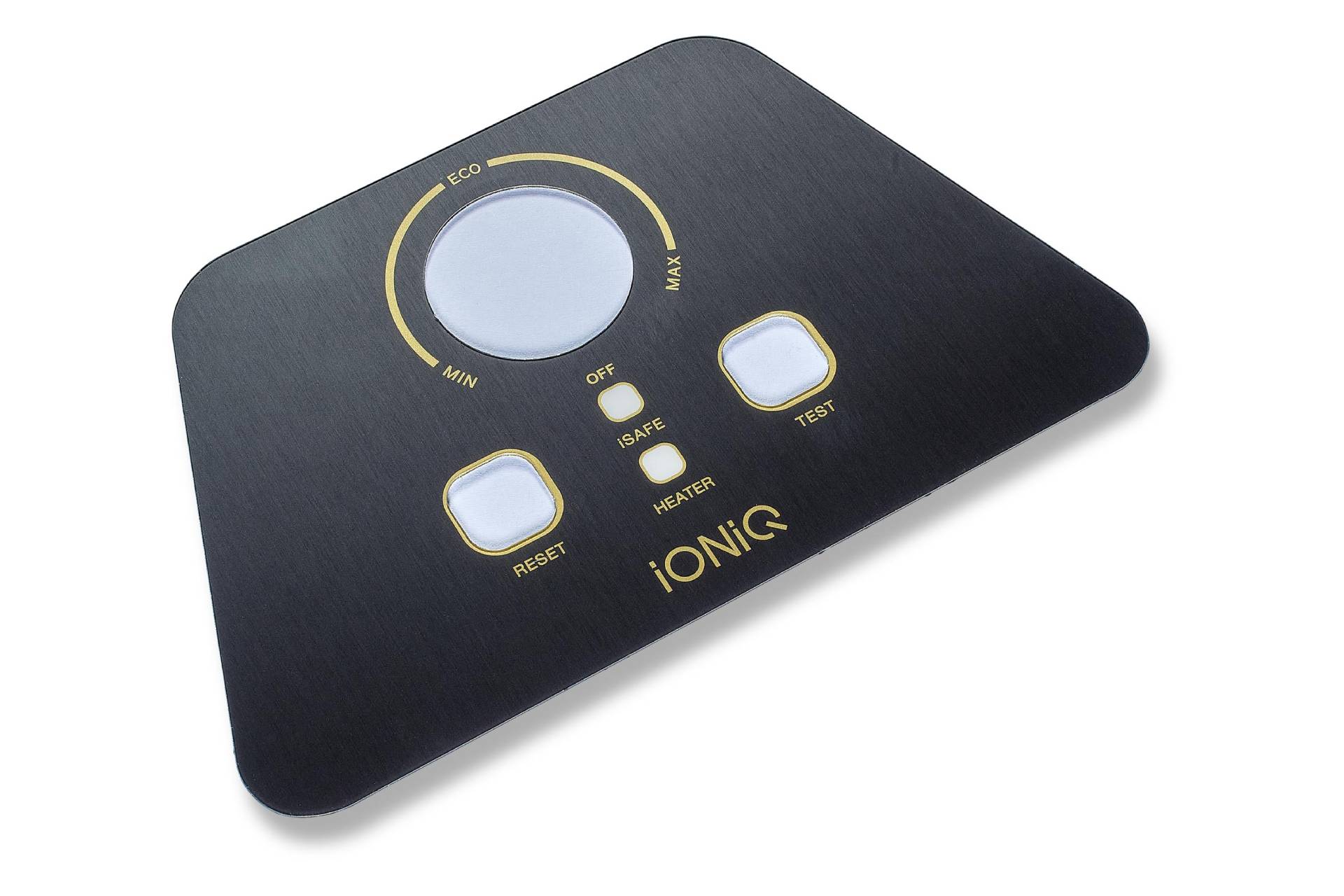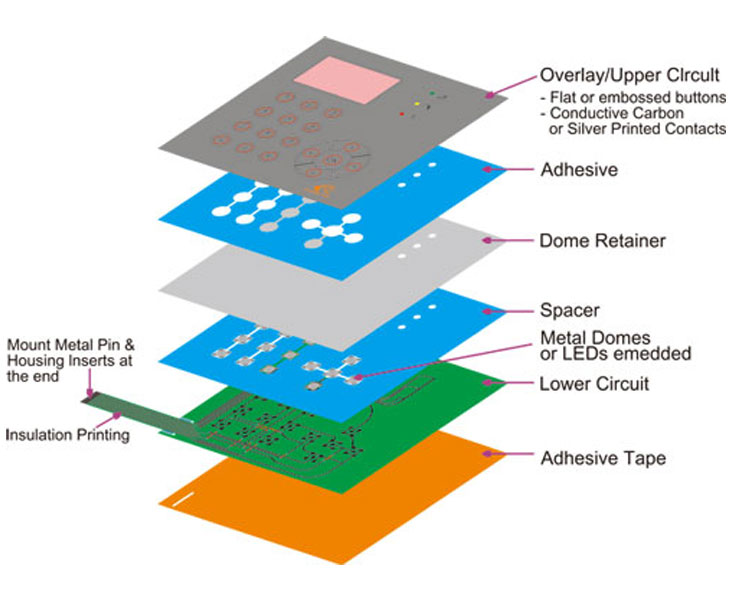Seasoned Membrane Switch Manufacturer for Complex Projects
Exploring the Manufacturing Process of Membrane Switch for Numerous Industries
The production procedure of Membrane buttons is a complex endeavor that requires accuracy and interest to detail. From selecting proper materials to implementing extensive quality assurance measures, each step plays an essential duty in ensuring performance. Various markets, consisting of vehicle and clinical, depend on these elements for their one-of-a-kind applications. Comprehending the ins and outs of this procedure exposes considerable understandings into just how these buttons are generated and their influence throughout varied industries.
Comprehending Membrane Switches: A Review

Key Products Utilized in Membrane Switch Manufacturing
In Membrane switch production, the option of essential products significantly influences performance and sturdiness. Conductive products, adhesives, and finishes play important duties, while substratum option influences total efficiency and reliability. Recognizing these components is essential for enhancing the style and production of Membrane buttons.
Conductive Products Introduction
Conductive products play an important role in the capability of Membrane switches, guaranteeing trusted electric connections within the gadget. Commonly utilized materials consist of silver, copper, and carbon-based inks, each offering distinctive benefits. Silver is favored for its high conductivity and sturdiness, making it optimal for applications calling for durable performance. Copper, while slightly much less conductive than silver, is a cost-effective option typically utilized in printed circuits. Carbon-based inks supply a versatile choice, appropriate for applications where adaptability and lower expenses are prioritized, although they have lower conductivity compared to metal alternatives. The choice of conductive products straight influences the total dependability, life-span, and efficiency of the Membrane switch, making it an important factor to consider in the production process.
Adhesives and Coatings
Adhesives and finishes are important elements in the manufacturing of Membrane buttons, providing crucial bonding and safety residential or commercial properties. These products guarantee that different layers of the switch, consisting of visuals overlays and wiring, stick securely to each other, boosting longevity and functionality. Frequently made use of adhesives consist of pressure-sensitive adhesives (PSAs) and epoxy-based formulations, which offer strong bond and resilience. Coatings, such as polyurethane or acrylic, offer to secure versus ecological variables, consisting of moisture, abrasion, and chemicals. Additionally, coatings can enhance tactile feedback and aesthetic charm, adding to the overall customer experience. The option of ideal adhesives and finishings is vital for optimizing efficiency and long life in varied applications across various markets, ensuring that Membrane changes meet specific operational needs.
Substratum Option Variables
Substratum option plays a crucial duty in the production of Membrane switches, as it greatly affects their general performance and resilience. Key materials such as polyester, polycarbonate, and adaptable printed motherboard (FPCBs) are commonly used for their distinct homes. Polyester is favored for its cost-effectiveness and resistance to abrasion, making it ideal for applications with high wear. Polycarbonate deals remarkable clarity and impact resistance, suitable for settings calling for high visibility. FPCBs give enhanced versatility and are commonly used in intricate designs. The option of substrate also impacts aspects like thermal security, chemical resistance, and ease of printing. Inevitably, choosing the ideal substrate is vital for ensuring the performance and long life of Membrane switches over across various markets.
The Layout Refine of Membrane Switches
The design process of Membrane buttons is an important stage that greatly influences the performance and aesthetic appeals of the final item - membrane switch manufacturer. It starts with specifying the certain requirements of the application, including dimensions, button design, and tactile comments choices. Designers need to consider user interaction, guaranteeing that the switch is instinctive and accessible.Next, products are chosen based on durability, versatility, and ecological resistance. The assimilation of graphics and branding components is also vital, as it boosts visual charm and communication. Prototyping permits repetitive screening, allowing modifications based on customer responses and performance evaluations.Additionally, the design must account for the electrical elements, such as circuits and ports, guaranteeing integrity and simplicity of use. Eventually, a successful layout balances performance, visual appeals, and individual experience, paving the way for effective production and resilient performance in numerous sectors
Printing Strategies for Membrane Switches
The printing methods used in Membrane switch article source production play a crucial function in establishing the end product's top quality and functionality. Display printing provides advantages such as longevity and dynamic shade application, while digital printing developments give versatility and accuracy in design. Recognizing these techniques can greatly influence the overall efficiency of Membrane buttons in various applications.
Screen Printing Benefits
Various advantages make screen publishing a preferred method for generating Membrane switches. This approach permits premium, in-depth layouts and vivid shades, which are vital for interface applications. Display printing is specifically reliable for using thick ink layers, boosting durability and tactile feedback. Furthermore, it offers outstanding bond to different substrates, ensuring longevity popular environments. The process is affordable for huge manufacturing runs, as it minimizes setup time and waste. Display printing sustains a wide range of inks, including specialized and UV-curable choices, enabling flexibility in design. Its capacity to create constant results across multiple devices makes it a trustworthy choice for makers going for top quality and performance in Membrane button production.
Digital Printing Innovations

Innovations in digital printing innovation are changing the production of Membrane switches, supplying producers cutting-edge solutions that boost design adaptability and efficiency. Digital printing permits high-resolution graphics and intricate check this designs, making it possible for customized branding and capability without the limitations of conventional approaches. This method decreases configuration times and expenses, helping with shorter manufacturing runs and minimal waste, making it perfect for companies with varying demands. In addition, improvements in ink formulations offer far better longevity and bond, making certain durability in various environments. As sectors progressively look for customized and complex layouts, digital printing stands apart as a vital technique, setting a new criterion in Membrane button manufacturing. The integration of these advancements placements suppliers to satisfy advancing market requires successfully.
Setting up and Layering of Membrane Switch Components
Careful setting up and layering of Membrane button parts are necessary to ensuring performance and toughness. This procedure starts with the exact placement of different layers, including the graphic overlay, glue, circuit layer, and support product. Each component must be carefully placed to maintain electrical integrity and interface responsiveness.During setting up, conductive traces are put on the circuit layer, normally made from materials like polyester or polycarbonate. This layer is essential, as it beams when pressure is applied. The sticky utilized for bonding these layers is likewise selected for its capacity to sustain environmental anxieties while keeping a secure bond.Heat and pressure are often applied throughout the setting up process to establish that the layers adhere properly without jeopardizing the performance of the switch. Interest is offered to the side sealing to shield against dampness and impurities, protecting the durability of the Membrane button in different commercial applications.
Quality Assurance Procedures in Membrane Switch Manufacturing
Quality assurance actions play a necessary duty in guaranteeing the reliability and performance of Membrane changes complying with the setting up and layering of their elements. In the production procedure, several essential assessments are conducted to copyright high quality standards. These consist of aesthetic inspections for flaws in printing and glue application, as well as functional tests to confirm the responsiveness of each switch.Additionally, ecological screening is performed to assess the switches' sturdiness versus temperature variations and moisture direct exposure. Makers often execute statistical procedure control (copyright) strategies to keep an eye read the article on manufacturing uniformity, making it possible for very early detection of anomalies.Furthermore, traceability systems are developed to track components and products, guaranteeing accountability and assisting in remembers if required. Calibration of devices and adherence to industry criteria are likewise vital to keeping product integrity. Jointly, these quality assurance measures guard the performance of Membrane switches over throughout various applications, ultimately enhancing customer contentment.
Applications of Membrane Changes Throughout Different Industries
Membrane switches are utilized across a diverse selection of markets, showcasing their adaptability and adaptability. In the medical industry, they supply water resistant and trustworthy interfaces for tools such as analysis devices and mixture pumps, making certain hygiene and ease of use. The vehicle industry uses Membrane buttons for dashboard controls, enabling seamless communication in between the chauffeur and car systems.In consumer electronics, these switches are discovered in home appliances and portable devices, supplying a smooth, modern-day visual while improving capability. Industrial applications also utilize Membrane changes for equipment control panels, where resilience and resistance to rough conditions are essential.Furthermore, the aerospace and protection fields use Membrane buttons for cabin instrumentation and interaction systems, focusing on reliability and performance under extreme problems. In general, Membrane buttons play an essential role in boosting the customer experience and functional efficiency throughout different domain names.
Frequently Asked Concerns
How much time Does It Take to Produce a Membrane Switch?
The manufacturing time for a membrane layer button generally ranges from a few days to a number of weeks - membrane switch manufacturer. Factors affecting this duration consist of layout complexity, product accessibility, and production volume, all affecting the general timeline considerably
What Is the Normal Life Expectancy of a Membrane Layer Switch?
The typical life expectancy of a membrane button typically varies from 1 to 5 million actuations, depending on aspects such as material high quality, ecological problems, and usage regularity, substantially affecting sturdiness and total efficiency.
Can Membrane Switches Be Personalized for Specific Applications?
Membrane buttons can indeed be customized for specific applications. Their style flexibility enables modifications in dimension, form, shades, and graphics, ensuring compatibility with distinct demands across numerous sectors and boosting capability and user experience.

Are Membrane Switches Eco-friendly?
The ecological effect of Membrane changes differs. Some materials utilized may not be green, while advancements in producing processes are significantly concentrating on sustainability, aiming to reduce waste and promote recyclable elements in their manufacturing.
What Are the Usual Failure Modes of Membrane Switches?
Typical failing modes of Membrane switches include delamination, adhesive failure, damage from use, moisture access, and electric failings. These concerns can considerably affect functionality, efficiency, and life expectancy in various applications across different sectors. Membrane buttons can be personalized to fit specific style demands, such as capability, size, and form, making them very adaptable.The construction typically involves several layers, including a graphic overlay, sticky, and a circuit layer, which work with each other to develop a seamless customer experience. In Membrane button production, the choice of essential materials significantly influences performance and resilience. The automotive sector utilizes Membrane buttons for dashboard controls, allowing seamless interaction in between the motorist and vehicle systems.In customer electronic devices, these buttons are found in appliances and handheld gadgets, providing a smooth, modern aesthetic while boosting capability. Industrial applications additionally take advantage of Membrane switches over for equipment control panels, where durability and resistance to extreme problems are essential.Furthermore, the aerospace and defense sectors make use of Membrane buttons for cockpit instrumentation and interaction systems, prioritizing dependability and efficiency under extreme problems. Membrane buttons can certainly be customized for specific applications.